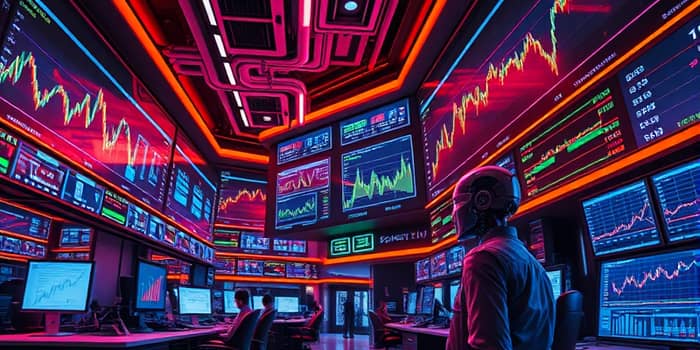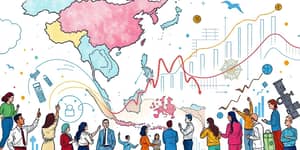
In early 2025, the world of finance witnessed an extraordinary milestone as automated trading volumes surged to unprecedented heights. Technology-driven strategies, underpinned by cutting-edge artificial intelligence, turbocharged markets and reshaped the landscape of global trading. This article dives into the remarkable growth, the forces propelling it, and the challenges that lie ahead.
From legacy exchange floors to cloud-based platforms, the transition toward algorithmic execution has accelerated. Firms large and small are racing to harness machine learning models and real-time analytics to stay competitive in an environment defined by speed and precision.
Automated trading relies on sophisticated algorithms that can analyze vast amounts of data and execute orders within milliseconds. These systems incorporate natural language processing, pattern recognition, and statistical analysis to identify profitable opportunities across asset classes.
By 2025, it is estimated that AI will handle almost 89% of global trading volume. Such dominance reflects the transformative impact of technology on traditional investment strategies.
These components work in harmony to reduce human error and optimize execution costs. The ability to process unstructured data—social media sentiment, news feeds, or macroeconomic indicators—gives algorithmic platforms an edge in volatile environments.
January 2025 saw Tradeweb report an astonishing total trading volume of $54.6 trillion across multiple asset classes. The average daily volume (ADV) for that month hit $2.44 trillion, marking a 20.3% year-over-year increase. These numbers underscore the growing reliance on automated strategies to meet client demand.
Meanwhile, MarketAxess delivered its own headline figures in April 2025. Total credit ADV jumped by 32% over the previous year, and total rates ADV soared by 93%. Portfolio trading ADV also experienced a robust uptick, reflecting the platform’s deep liquidity pools and advanced algorithms.
Catalyzing this growth are continuous innovations in machine learning and data science. Traders and institutions are exploring new frontiers beyond traditional models, seeking breakthroughs in efficiency and alpha generation.
Quantum computing remains on the horizon as a potential game-changer. Although still nascent, quantum algorithms promise to tackle optimization problems that classical systems cannot solve within reasonable timeframes.
Despite the upbeat projections, automated trading comes with its own set of complexities. Regulators worldwide are intensifying scrutiny to ensure market stability and investor protection.
Firms must balance innovation with compliance. Building robust governance frameworks and fostering dialogue with regulatory bodies are essential to maintain trust and avoid costly penalties.
Looking ahead, the algorithmic trading market is on track to more than double in value by 2032, reaching $6.05 billion in market size. This trajectory is driven by continuous adoption of cloud-based solutions and integrated AI across global exchanges.
Key opportunities include:
Furthermore, collaboration between fintech startups and established institutions is fostering a rich ecosystem of innovation. Startups bring agility and fresh perspectives, while incumbents provide scale and regulatory expertise.
Automated trading volumes have reached new records, but this is only the beginning. The convergence of AI, machine learning, and next-generation computing heralds a future where markets operate with unparalleled efficiency.
Stakeholders—traders, technologists, and regulators alike—must work together to navigate challenges and unlock the full potential of algorithmic strategies. By embracing innovation responsibly and maintaining strong oversight, the financial community can ensure that automation not only drives growth but also upholds market integrity.
As automated trading continues its upward trajectory, the ability to adapt, learn, and evolve will define the next wave of industry leaders. Those who combine visionary technology with sound governance will shape the future of finance.
References













